Method Breaks Ground on Its First U.S. Factory in Chicago
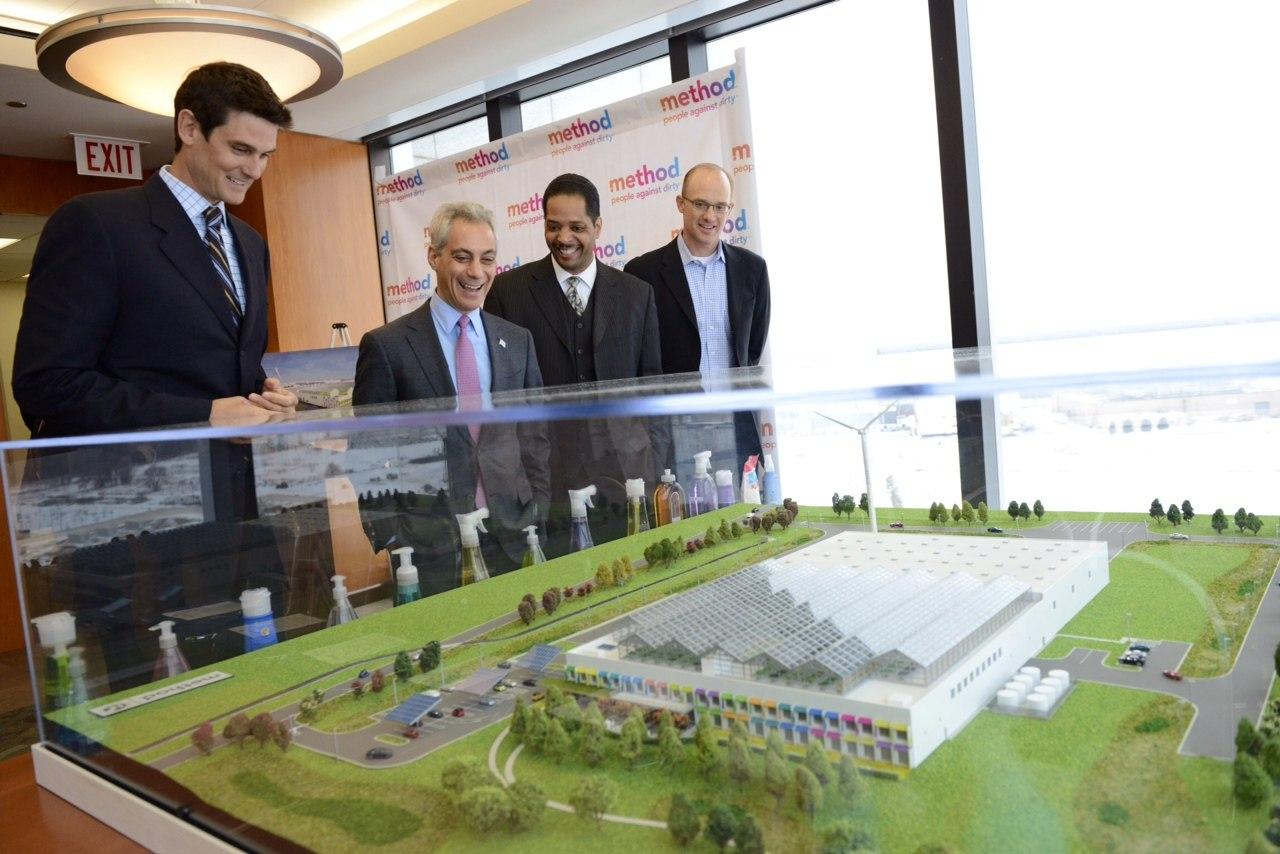

Eco-friendly cleaning supply company Method is known for pushing the envelope even in the sustainable business community: encouraging a work culture of "weirdness” to keep employees happy and recycling plastic litter from the Great Pacific garbage patch into product packaging.
Now the San Francisco-headquartered company is working on another cutting-edge initiative -- unveiling design plans for its first U.S. manufacturing plant that it hopes will be the first LEED Platinum certified factory in the consumer packaged goods industry.
Method, along with Chicago Mayor Rahm Emanuel, announced details of the new facility, set to be built on the city’s South Side, in a groundbreaking ceremony on March 4. The factory will create nearly 100 new manufacturing jobs for Chicago residents, and Method said it plans to recruit residents from the Pullman neighborhood where the plant is located.
"The opportunity to build our first manufacturing plant in Chicago marks a milestone in Method's journey of aligning our interests as a business with the interests of society and the environment," said Adam Lowry, co-founder and chief greenskeeper of Method, in a statement.
Indeed, whether or not the factory attains LEED Platinum status, its green design features, coupled with its benefits to the local community, will make Method’s plant a success story of sustainable business and the triple bottom line.
Set to be built at a former lumberyard that is now a brownfield site, the facility will include a refurbished wind turbine and a solar array that will generate about half of the plant’s annual electricity. Method’s eventual goal is to run the factory entirely on renewable energy.
The building will feature a transparent south-facing wall to reduce the need for artificial lighting and serve as a metaphor for Method’s corporate transparency. Method and its design partner William McDonough + Partners will choose environmentally responsible building materials endorsed by the Cradle-to-Cradle certification program.
Many of the factory’s green design elements will make it a good neighbor, said the plant’s lead architect William McDonough in a statement. The facility’s green roof will grow fresh fruits and vegetables for the local community, and 17 of the property’s 22 acres will be landscaped with native plants and remain as green space, which will revitalize the brownfield site and beautify the surrounding Pullman neighborhood.
Method and Williams McDonough + Partners aim to make the plant welcoming to the local community, installing a sidewalk around the property rather than a fence and inviting the public inside for tours of its eco-friendly manufacturing process.
"We have these images of factories as gritty buildings with smokestacks — facilities that no families would want in or near their neighborhoods … Method’s new factory is a living dedication to clean in as many ways as possible; think about a tree -- it produces oxygen, absorbs carbon, purifies water, produces food and transforms solar energy."This factory is a clean factory. The energy will be clean. The water will be clean. The production will be clean. The building will be full of daylight and fresh air. The products made here are as clean as anyone can make them and help people have beautifully clean places to live," McDonough said in a statement.
Method currently works with other U.S. manufacturers to make their products, so the new factory will be the first manufacturing facility the company owns and operates.
Method’s new investment indicates that even when business is booming for the company that was acquired by Ecover in 2012, the green business will remain true to its roots and expand in an environmentally and socially responsible way.
“Building our world-class factory is an important evolution in our company’s growth and we hope it serves as a model of what manufacturing and urban revitalization looks like in the 21st century,” said Method CEO Drew Fraser in a statement. “We aim to show that sustainable business is better business by creating an advanced, flexible and cost-effective facility that will fuel both the growth of our business and the renewal of the Pullman area.”
Image credit: Method
Passionate about both writing and sustainability, Alexis Petru is freelance journalist based in the San Francisco Bay Area whose work has appeared on Earth911, Huffington Post and Patch.com. Prior to working as a writer, she coordinated environmental programs for Bay Area cities and counties. Connect with Alexis on Twitter at @alexispetru
World Bank Highlights Biodiversity's Central Role in Alleviating Poverty
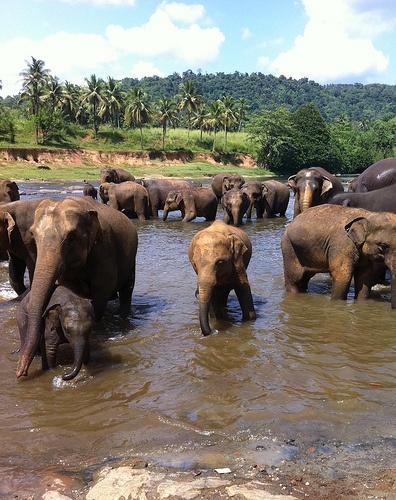

It may seem quaint to some, but at a fundamental level, there are ethical, moral, even spiritual motives for we humans to do our best to conserve wilderness, ecosystems and biodiversity. Then, of course, there are the most pragmatic and self-interested: all our economic activities and the health and well-being of all our societies is dependent on healthy ecosystems, and biological diversity is central to assuring health ecosystems.
Though perhaps best known, and criticized, for bankrolling development of large-scale infrastructure projects such as coal-fired and hydroelectric power plants, the World Bank has likewise been instrumental in helping conserve biodiversity and sustainably utilize the numerous and varied services diverse ecosystems provide.
The World Bank has also been a key agent in helping realize the eight U.N. Millennium Development Goals (MDGs). Though results to date are very much mixed, researchers, agents and policy makers have found that there are ways of achieving the MDG goals that are self-reinforcing and effective. Such synergy exists, for instance, when it comes to achieving two MDGs: reducing poverty and ensuring environmental sustainability.
Biodiversity conservation and alleviating poverty
The ongoing existence and success of our species rests on some 4 billion years of evolution of life on Earth, and the interaction of all that life with Earth's physical, inorganic environment. Our ability to survive, much less thrive, is predicated on the health of ecosystems, the services they provide, and our ability to act in harmony with the self-regulating processes manifest in nature.The World Bank makes the point simply and succinctly:
“Animal, plant and marine biodiversity keeps ecosystems functional. Healthy ecosystems allow us to survive, get enough food to eat and make a living.”There's a direct linkage between the MDG goals of conserving biodiversity, maintaining the health and integrity of ecosystems, and alleviating poverty. It's estimated that nearly half the world's human population – more than 3 billion people – live on less than $2.50 a day.
At least 80 percent live on less than $10 a day, and the income gap is widening globally: More than 80 percent of the world's population lives in countries where income differentials are widening. Some 75 percent of the world's impoverished, moreover, live in rural areas and depend on nature for their water, food and livelihoods.
As the World Bank states:
“The loss of iconic species is a tragedy with broad and deep impact. Animal, plant and marine biodiversity keeps ecosystems functional. Healthy ecosystems allow us to survive, get enough food to eat and make a living. When species disappear or fall in number, ecosystems and people—especially the world’s poorest—suffer.”
But you can't eat scenery, or can you?
All well and good, but in a day and age of less and less in the way of government-sponsored public infrastructure and services, there isn't any private profit motive in conserving biodiversity, or alleviating poverty for that matter, is there? The World Bank, along with other international organizations, national governments, NGOs and local communities, has been stepping into the breach.As JustMeans' Vikas Vij writes in a recent blog post:
"The World Bank has actively invested more than $1 billion to protect nature and wildlife. The Bank is also the largest provider of development assistance to fight environment and natural resources crime, with $300 million invested in forestry, fisheries and wildlife law enforcement. At a time when habitats are disappearing and poaching is on the rise, collective action to protect biodiversity has become crucial."Throughout the world, countries are being threatened by the degradation and loss of terrestrial, aquatic and marine ecosystems and biodiversity, poverty, and growing disparities in income and economic opportunities. Ironically, it's often economic development often brings this about.
Well aware of this seeming paradox, the World Bank since 1988 has invested $4 billion in biodiversity projects. That's spurred another $4 billion in co-financing.
With the MDG end date of 2015 right around the corner and the U.N. in the midst of formulating a succeeding, post-2015 agenda centered on sustainable development, the multilateral development bank is working to raise the profile, and the stakes, of its biodiversity and poverty alleviation initiatives. As the World Bank explains:
“Developing country partners are increasingly aware that biodiversity and ecosystem services can be an engine for inclusive green growth and an important part of the solution to emerging global challenges, from climate change to food insecurity. It has also been learned—through long and often hard experience—that good nature conservation is possible.“Conservation can also be affordable and cost-effective as well as beneficial to poor communities when it is done right. To do it right—especially in an era of diminishing public expenditures for biodiversity conservation—innovation, communication and effective partnerships are needed between governments, communities, financial institutions, companies and conservation organizations.”
The "Greening Development" environment strategy
At the core of such efforts, forging “green, clean, resilient” development paths is the driving theme of the “World Bank Group Environment Strategy 2012-2022.” Key to realizing the goals expressed in its environment strategy, the World Bank is taking a wide range of steps, including:- Greening national income accounts by working with organizations such as the Global Partnership on Wealth Accounting of Ecosystem Services (WAVES) to strengthen and intensify efforts to support countries factoring natural capital into economic decision-making.
- Building partnerships that span government, science groups, businesses, NGOs, legal and law enforcement and others with the aim of strengthening the institutional and legal frameworks for formulating, assessing, implementing and enforcing actions that address biodiversity loss and improverishment.
- Establishing and expanding protected area systems through programs such as the Amazon Region Protected Areas program in Brazil, and a similar effort to protect the Upper Guinean Tropical Rainforest in Liberia.
- Engaging communities in co-management, including initiatives such as Pakistan's Protected Areas Management Project and the Wildlife Conservation Leasing Demonstration Project in Kenya.
http://www.youtube.com/watch?feature=player_embedded&v=Sy4hXw53_P8
Image and graphic courtesy of the World Bank
New IRS Video Guides Same-Sex Couples Through Tax Filing


Next month, legally married same-sex couples are going to be filing their taxes differently than in previous years, and the Internal Revenue Service (IRS) has recently released a video introducing changes to the filing process, resulting from last summer’s Supreme Court decision to strike down parts of the Defense of Marriage Act (DOMA).
The most radical feature of these new tax implications is that the federal government recognizes the marriage of same-sex couples as long as they wedded in a jurisdiction that allows same-sex unions, regardless of where the spouses live now. That means that the federal government would consider a gay or lesbian couple to be legally married – and receive all the corresponding federal tax benefits – if the duo got hitched in their home state of Massachusetts, where gay marriage is legal, but then had to move to Colorado, a state that does not authorize same-sex unions. The government would also acknowledge same-sex marriages performed in foreign countries that authorize such unions, meaning a married couple from New Zealand could move to the U.S. and still have their union recognized, or an American couple vacationing in Canada could get married, come home to Louisiana and be considered married by the federal government.
http://youtu.be/G1pAihAyKuA
In the video, friendly IRS spokeswoman Michelle explains that legally married same-sex couples now need to file their federal income tax return just as heterosexual spouses do – as either married filing jointly or married filing separately. The new tax status will apply to all federal tax provisions where marriage is a factor, such as claiming personal and dependency exemptions, receiving employee benefits and contributing to an individual retirement account. Couples don’t need to amend tax returns from previous years, but they can, using form 1040X, in case they are eligible for a refund.
The IRS has also compiled a FAQ sheet to provide further information to same-sex married couples filing their tax returns as married for the first time this year.
These changes to the federal tax law stem from the Supreme Court’s decision in the United States v. Windsor case, which overturned provisions in DOMA that barred the federal government from recognizing the legal marriages of same-sex couples. Following the court’s landmark verdict, the Treasury Department and IRS made a ruling that legally married same-sex couples will be treated as married for all federal tax purposes, including income, estate and gift taxes.
Because U.S. v. Windsor was only concerned with DOMA and federal tax law, state governments are not required to recognize same-sex unions: Thus, a gay couple may be considered married by the federal government but treated as single by their state, if same-sex marriage is not legal there. This dichotomy in the law will create confusion this year as some states instruct taxpayers to write their federal filing status – single, married filing jointly, etc. – on their state tax return.
Gay and lesbian married couples can learn more about filing their taxes this year by visiting the Human Rights Campaign’s online resource center or during a free webinar – “Taxes after DOMA: What do same-sex married couples need to know when filing their taxes?” – hosted by the Human Rights Campaign and the National Women’s Law Center today at 2 p.m. EDT.
Image credit: Flickr/John Morgan
Passionate about both writing and sustainability, Alexis Petru is freelance journalist based in the San Francisco Bay Area whose work has appeared on Earth911, Huffington Post and Patch.com. Prior to working as a writer, she coordinated environmental programs for Bay Area cities and counties. Connect with Alexis on Twitter at @alexispetru
How Cloud Computing Can Help Shrink Corporate Energy Consumption
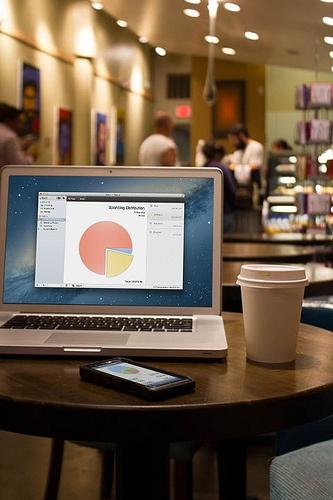

With the world population now hovering around 7 billion and the increased strain put on the environment by developing nations such as India and China, the need for environmentally friendly business practices is more important than ever. Although the United States still has much to do to improve its reputation in this area – per capita, the United States trails only a few nations in energy consumption, all of which have much smaller population sizes – individual business owners can do their part, starting today.
If you own or operate a business and are interested in reducing your company's environmental impact, consider cloud communications solutions from leading providers such as Mitel. Storing data and information in the cloud can help you minimize your carbon footprint by taking advantage of shared resources. Think of it this way: Why dedicate your own resources to solve a problem when you can call upon pre-existing resources? That is just one of the many promises of working in the cloud.
Cloud computing: Global reach with (nearly) zero footprint
Admittedly, pinpointing the exact degree to which cloud computing can reduce your carbon footprint is difficult to do, if not impossible. This is partially due to the fact that every company's needs are different. That being said, the general consensus is in, and it states clearly: using the cloud can save energy costs and reduce CO2 emissions.
By how much though? Well, the predictions vary, but the CDP (formerly Carbon Disclosure Project), a nonprofit group that measures, tracks and analyzes corporate climate change information, estimates that cloud computing could save large U.S. corporate entities up to $12.3 billion in energy costs annually through 2020, and reduce CO2 emissions by 85.7 million metric tons per annum. Even if these figures are optimistic by half, the benefits of such an approach are clear.
A number of reasons help contribute to this low environmental impact. In general, cloud computing is a more sustainable approach to data storage than doing so locally because it calls upon a shared, centralized network. By consolidating storage into a central hub, you eliminate the need for individual devices, such as hard drives and computers. And this means that those devices no longer have to be manufactured, powered, cooled or maintained. In summation, centralization leads to energy conservation. It really is that simple.
Make the change today to save tomorrow
If you are interested in pursuing cloud computing as a solution for a data storage problem, you have options. Whether you simply require external storage or are looking for servers to support an online presence, you don't have to rely upon your own hardware. Companies like Dropbox, Box, Amazon, Google and a number of individual hosting companies all offer cloud computing services. Simply do your research and choose the provider that best suits your needs and budget.
Ultimately, making such a change will reap your company not only financial rewards, but moral benefits as well. We all must do our part to conserve natural resources and reduce our impact on the environment – why not start here?
Image credit: TradingAcademy.com via Flickr
FDIC sues banks over alleged Libor manipulation


Barclays, HSBC, Citigroup and Royal Bank of Scotland are among 16 banks being sued by the US Federal Deposit Insurance Corporations (FDIC) over allegations of rigging the London interbank offer rate (Libor).
The Libor rate is the interest rate at which banks offer to lend funds to one another in the international market.
The FDIC said the manipulation caused substantial losses to 38 US banks which were shut down during and after the 2008 financial crisis.
The US regulator accuses the banks mentioned in its lawsuit of rigging the rate from August 2007 to at least mid-2011.
Other banks named in the lawsuit include Bank of America, JPMorgan Chase, Deutsche Bank, Lloyds Bank, Credit Suisse, UBS and Rabobank.
Over the past two years, regulators worldwide have been investigating the manipulation of the rate and there have been £2.26bn in fines levied so far.
Picture credit: © Roland Nagy | Dreamstime.com
3p Weekend: 7 Booming Job Sectors Fueling America's Green Economy
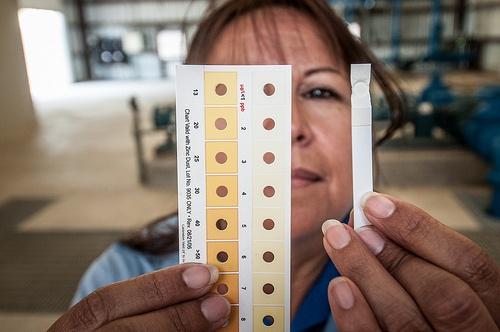

With a busy week behind you and the weekend within reach, there’s no shame in taking things a bit easy on Friday afternoon. With this in mind, every Friday TriplePundit will give you a fun, easy read on a topic you care about. So, take a break from those endless email threads, and spend five minutes catching up on the latest trends in sustainability and business.
Before we get on to this week's 3p Weekend, let's pose a question: What is a green job? It's a simple question but one that has no official answer. In March 2012, the Bureau of Labor Statistics (BLS) took a crack at defining green jobs and calculating their saturation in the market in a detailed survey of the green economy. There are some limitations to their definition, but it's consistent with most that came before it (and it makes sense to us for the most part). So, let's decide to use it as our go-to for this list.
Now that we've gotten that out of the way, let's move on to the fun part: It's tough to deny that the green jobs sector is making waves across the country, even as overall unemployment rates are slow to decline. BLS determined that green employment is growing at a faster rate than the overall economy, with no sign of slowing down anytime soon.
The saturation of green jobs is growing across all industries, but a select few are leading the charge. Read on for seven booming green job sectors set to explode in the 21st century.
1. Water
The BLS reports that 50 percent of all jobs in the water industry are green jobs, which is pretty impressive if you ask us. As this sector continues to expand (comprising water supply and irrigation, scarcity planning and management, testing and research; the list goes on and on), job opportunities will likely grow right along with it. "With 21,500 green jobs and a nearly 50 percent green intensity, [the water industry] is undoubtedly significant to the broader green economy, yet it has room to grow," BLS observed in its report.
2. Solar
A 2014 report from the Solar Foundation reveals that the U.S. solar energy sector continues to create jobs at a much higher rate than the economy overall. The U.S. added 56 new solar jobs a day for nearly all of 2013 -- meaning solar employment grew at a rate 10 times the national average. Installers added the most solar workers over the past year, growing by 22 percent.
3. Manufacturing
Manufacturing may be in trouble in the U.S. as a whole, but green manufacturing is a different story. BLS found that 20.4 percent of all green jobs in the U.S. are in the manufacturing sector, although it represents only 10.8 percent of total employment. In a separate report on the green economy, Brookings Institute observed that, "The electric vehicles (EV), green chemical products, and lighting segments are all especially manufacturing intensive." As consumer prices in these segments continue to drop, the green manufacturing sector seems poised to continue this upward climb.
4. Construction
Green jobs make up 6.3 percent of all jobs in the U.S. construction sector, according to BLS. This figure is fairly modest compared to other industries on this list, but it still represents nearly 400,000 green jobs. With sustainability becoming the name of the game when it comes to new building construction, green job numbers in this sector have nowhere to go but up.
5. Transportation
If you haven't heard, people are using public transportation way more these days. In fact, Americans took a record 10.7 billion public transit trips in 2013, according to data released this week. Transportation options range from hybrid-electric buses, to car-sharing services, to expanding rail lines -- leaving growth opportunities in the sector wide open. More than 200,000 people held green public transit jobs in 2012 -- a trend that's undoubtedly on the uptick.
6. Environmental engineering
Environmental engineers apply knowledge of biology and chemistry to tackle real-world challenges like pollution, recycling and urban planning. Although the BLS reported only 53,200 U.S. environmental engineering jobs in 2012, the sector carries hefty promise for growth. CNN Money named it one of the top 10 fastest growing industries, as well as their overall No. 5 best job.
7. Sharing economy entrepreneurship
Back in 2009, three friends founded a ridesharing service called Uber -- now servicing 70 cities across the U.S. A year earlier, three guys named Nathan Blecharczyk, Brian Chesky and Joe Gebbia launched Airbnb -- which now boasts more than 500,000 listings and recently attracted the talents of hospitality guru Chip Conley. Indeed, it's a wide world out there for an entrepreneur with a great idea and the passion, work ethic and tireless resolve to make it reality. U.S. entrepreneurship has hit record highs in recent years, and with the sharing economy on the rise, entrepreneurs in this sector will likely see this boost continue.
Image credit: Flickr/USDAgov
Based in Philadelphia, Mary Mazzoni is an editor at TriplePundit. She is also a freelance journalist who frequently writes about sustainability, corporate social responsibility and clean tech. Her work has appeared on the Huffington Post, Sustainable Brands, Earth911 and The Daily Meal. You can follow her on Twitter @mary_mazzoni.
Can We Stop Overfishing Before It's Too Late?
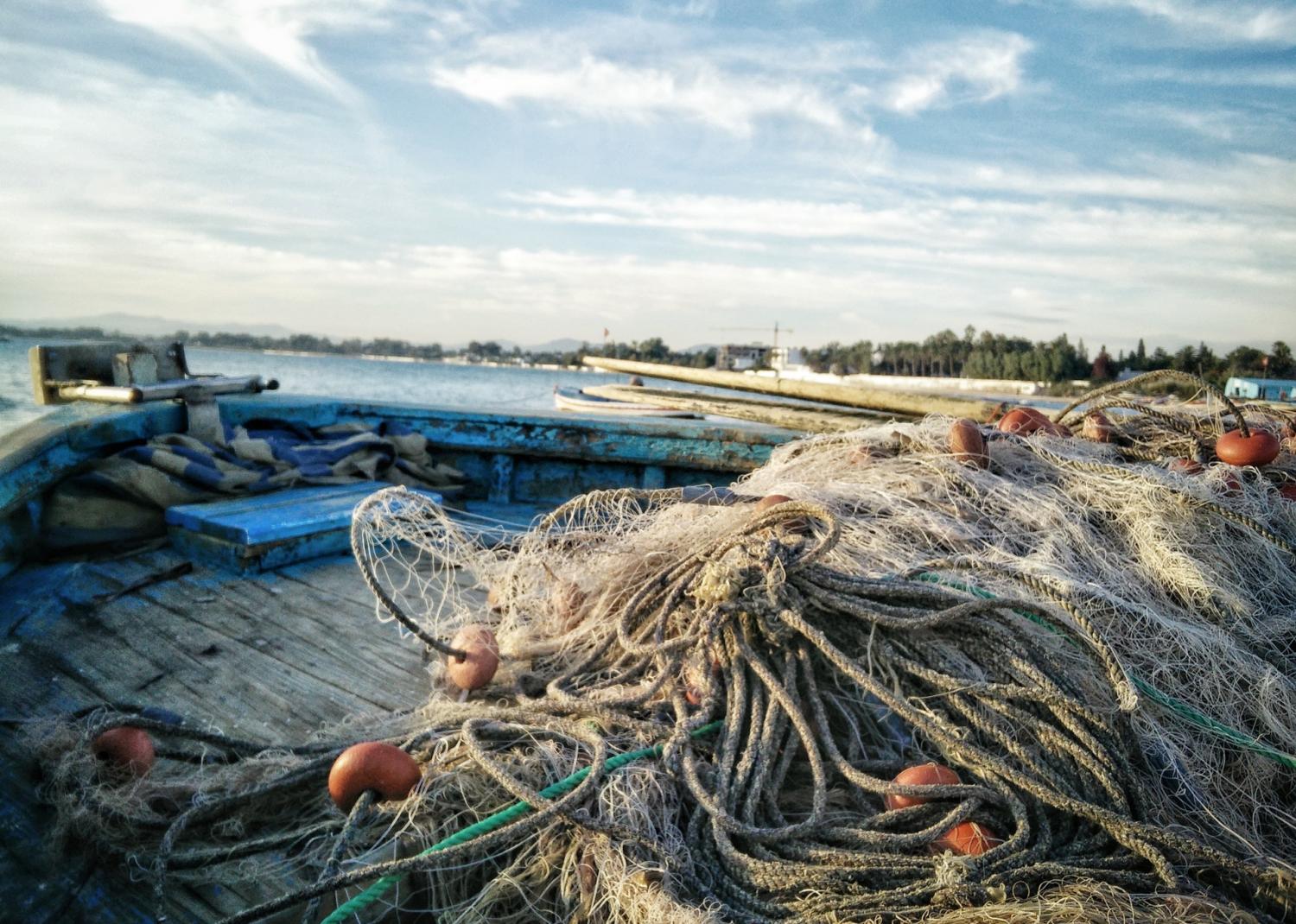

Fish has been part of the human diet and culture since the beginning of time. It seems almost inconceivable that it could suddenly stop being available. But we're headed for a cliff if we don't improve sustainable fishing worldwide.
Last year I found myself sputtering in disbelief when the waitress told me lake perch sliders were no longer available at my favorite local bar and grill. That same week a local fast food place that had always offered a lake perch sandwich switched to a generic fried "fish" sandwich. Along the Michigan coast of Lake Michigan, yellow perch has long been traditional and ubiquitous fare. But numerous factors including severely limited commercial fishing and a precipitous drop in Lake Michigan perch populations has eroded availability of this cultural staple.
This is a microcosm of an even larger issue. The world's oceans are in decline. Ocean catch reached its highest point, "peak fish," back in the 1990s. It's been declining fairly steadily since then. We're taking more fish from the ocean in unsustainable ways than the ocean can provide. As of 2010 fishing operations harvested over 80 million metric tons of wild caught fish worldwide. That doesn't even include the bycatch -- the undesired marine life caught while harvesting a desired species. Bycatch, estimated to be between 7 million and 38 million metric tons globally, can sometimes dwarf the desired harvest for a given species. In one extreme example, wild shrimp can come at a cost of 62 pounds of bycatch per pound of shrimp. So when we talk about the depletion of ocean wildlife, it goes beyond what we see on our plates.
According to the U.N. Food and Agriculture Organization 87 percent of the wild fisheries globally are stressed. That is, they're either over exploited, fished at the maximum level, are depleted or working toward recovery. In the past 10 years, many top predator populations, like tuna, have declined by 90 percent causing a massive imbalance in the ecosystem.
Meanwhile, demand for fish is outpacing the growth in the human population. While the world's population grows at 1.7 percent annually, fish production grows at 3.2 percent annually.
Wait a minute...if wild ocean catch peaked in the late 20th century, how can fish production be rising? The answer there is aquaculture. Farmed fish accounts for almost half of the fish consumed by people worldwide these days, and this total continues to grow. Aquaculture comes with its own ecological complications and threats to wild fish populations. They're likened to "floating pig farms" in the ocean, producing enormous amounts of concentrated waste with oxygen-consuming bacteria that suffocates life at the ocean floor. They are also breeding grounds for diseases and parasites that spread to the general fish population. And it's also worth noting that about a quarter of the food for that farmed fish comes from ocean catch. There's no free lunch to be had with farmed fish as it's currently practiced. It produces more fish, but adds more hardship to the already threatened wild populations which make up over half of the fish supply. It's not a cure-all.
So here we are: growing demand for fish as the human population explodes and ocean species decline. Almost half of the world's population, 3 billion people, rely on this resource for a key source of protein. And communities in virtually every coastal nation on Earth rely on fishing for their livelihoods.
What will happen if we don't manage this resource wisely? We're already seeing the effects of overfishing above and beyond the ecological disaster. The loss of fishing revenue can shred the generations-old underpinnings of communities. "Many of the Somali pirates we hear about used to be small, local fishermen but were displaced by large commercial fishing operations that depleted the fish" says Cheryl Dahle, founder of Future of Fish. The displaced fishermen sought out another way to provide for their families: piracy.
In 1992, the cod fishery collapsed along the Atlantic coast of Canada. Whole Newfoundland communities which had made their living on fishing for centuries experienced massive unemployment and community upheaval. Another fishing disruption in the groundfish fishery along the coast of New England caused similar disaster. According to research underway by Future of Fish:
"The challenges associated with the transition to sector management combined with deep cuts in quota have resulted in financial and psychological crisis for many members of the fishery. Some are unable to bring in enough income to cover basic living expenses...A recent study found that due to the fishery’s disaster declaration in late 2012, incidence of social disruption (e.g., changes in family, work, and community interactions) and high levels of psychological stress were common among groundfish permit holders."
A friend of mine from a multi-generational fishing family experienced the same thing growing up. When commercial fishing in the Great Lakes was severely limited in 1985 her father, a commercial fisherman, lost his livelihood and had to move the family to another coastal region.
Fishing is important business for coastal communities.
In 2010, fish production accounted for $218 billion in economic activity globally, a lot of which supports fishing communities in the developing world that rely on this resource as food and a living. It is absolutely essential -- ecologically, economically and socially --to take a long-term, strategic view of this resource. I'd always wondered why if the state of the oceans is so dire, why not simply make a massive effort to stop eating fish? Dahle says: "This punishes the communities who depend on fishing. And we need to learn to have a more positive relationship with this resource."
Of course, overfishing is only a part of the problem facing ocean ecosystems. Our oceans face pollution, agricultural runoff, invasive species and a changing climate -- just to name a few things. Where does overfishing rank in the order of threats? "Don't ask me to rank them," says Dr. Richard Methot, NOAA Science Advisor for Stock Assessments. "Fish stock as a factor is the thing that is most visible for us…increasingly we recognize that as we get the fishing up to sustainable levels the other impacts are easier to see. Addressing the particular impact of pollution or climate change will happen locally. We address all the factors within the ecosystem context."
Dahle agrees, declining to rank overfishing against other threats to ocean life: "Overfishing is absolutely fixable, and the most direct threat to individual species. We have to stop taking too much out of the ocean because overfished systems are less resilient to the other threats."
The United States and other developed nations have the resources to support excellent fishery management practices, identifying troubled fisheries and setting catch limits that help fish populations rebound to sustainable levels. Unfortunately, we in the U.S. import 86 percent of the fish we eat. So domestic management is only a small part of the scope. But of the thousands of fisheries around the world, only hundreds are closely monitored. So how do we promote sustainable fisheries around the world?
U.S. fish consumers must work to create demand for restaurants and distributors to know where our fish comes from. As I stated earlier, many companies, particularly of the fast food variety, identify their seafood simply as "fish" -- it's almost comical in its animal-class generality like offering "bird" nuggets or maybe a juicy "mammal burger." This vagueness also makes it impossible for consumers to have an educated understanding of what they're eating. Dahle says: "Consumers should ask about the fish they're buying. The server may not know. But what it does is it creates a demand for having that information."
It's also important for consumers to actually know to the best of their own ability where their food comes from. For this there are many tools. NOAA offers FishWatch.org to help consumers make wiser, more educated choices about the seafood they're purchasing: where it comes from, how it's harvested and pointers on how to avoid "seafood fraud" (intentionally mislabeled fish). All aspects of the supply chain should be transparent and traceable. Too often the fish we eat is commoditized to the point where sustainable fish is mixed in with unsustainable fish.
Governmental agencies monitor fish stocks and ecosystems and establish catch limits, while nongovernment organizations work with fishing communities worldwide to establish catch limits and no-fish zones where fish can spawn and repopulate the region for sustainability.
Other organizations like Future of Fish seek to empower entrepreneurs to develop innovative practices for a sustainable global supply chain for seafood.
The U.N. Food and Agricultural organization is also calling on entrepreneurs and all elements of the fishing supply chain to reduce fish waste. According to a recent report published in the journal Trends in Food Science and Technology, Norwegian fishermen dumped about 220,000 tons of wild fish scraps into the sea after processing their catch. These sorts of scraps include such parts as fish heads which are consumed in many parts of the world, and contain a lot of meat.
The global overfishing crisis is an instance where we know the threat and the risks, but we also have a firm understanding of the solution: known management practices and reaching out to third world communities, making the most of the product, traceability and creating demand for knowing where our fish come from. It benefits everybody to avert this disaster.
When asked about the future of the world's oceans, Dahle says: "I'm optimistic. I'm optimistic because we know what to do."
Image Credit: Pexels
Ridesharing Firms Struggle to Meet Needs of Americans with Disabilities


Like many living in San Francisco and other major cities across the United States, I have come to rely on transportation network companies (TNCs) such as Lyft, Uber, and Sidecar to get me around town. TNCs have revolutionized the way many of us get from Point A to Point B, but not for all of us -- not yet, anyway. There is a significant group that has long been let down by public transportation -- the disabled community -- and TNCs are struggling to break this trend.
I was reminded of this during a recent Lyft ride, where I happened to be picked up by one of the few wheelchair accessible vehicles in its (or any other TNC’s) fleet. My driver said her husband uses a wheelchair for mobility and regularly faces difficulties getting around the city when attempting to take taxis and MUNI (San Francisco’s light rail and bus system). MUNI buses often pass him by rather than stop to pick him up, and even wheelchair-accessible taxis often refuse to pick him up because they don’t want to lose the time it takes to lower and raise the lift and to strap him in.
To be fair, as a regular MUNI passenger, I can say first-hand that they seem to do a good job with accessibility -- most buses are equipped with wheelchair lifts and can "kneel" (lower the front of the bus) if a person has trouble moving up stairs. I have witnessed drivers make space for wheelchair users, and personally assist them to fasten the safety straps and wheel lock.
As for taxis, many fleets require a certain number of accessible vehicles to be on the road at any given time, which can be dispatched by phone. In December, Taxi Mecca New York City settled a major class-action lawsuit and adopted regulations requiring half the city’s more than 13,000 yellow cabs be accessible to people with disabilities within six years.
But with taxi fleets shrinking in several major cities as TNC popularity grows, the disabled community will have fewer transportation options -- that is, unless TNCs act.
In addition to helping some TNCs fully live up to their principles of fostering community, opening up to the disabled community makes business sense. Approximately 56.7 million people in the U.S. have some kind of disability -- and roughly 30.6 million of them have difficulty walking or climbing stairs, or use a wheelchair, cane, crutches or walker, according to the U.S. Census Bureau. The agency says people with disabilities "make up a significant market of consumers, representing more than $200 billion in discretionary spending and spurring technological innovation and entrepreneurship."
With TNCs -- especially Uber and Lyft -- fighting a bitter battle for ridesharing supremacy, the disabled community is a market they cannot afford to ignore. In California, they no longer have a choice.
Last fall, California's Public Utilities Commission (CPUC) outlined the first regulations for TNCs (and created the name), which included requiring driver background checks, driver training, drug and alcohol policies and minimum insurance coverage of $1 million. CPUC also mandated that TNCs develop an “Accessibility Plan,” including modifying apps so they "allow passengers to indicate their access needs," among other things.
Lyft, Uber, Sidecar and two other TNCs filed disability-access plans with the CPUC, claiming that they will ensure drivers don't discriminate against disabled customers. While the companies said they already have or soon will make their apps and websites accessible to blind users, they maintained drivers can still determine whether or not to allow service animals in their vehicles.
Uber recently came under fire for this when an UberX driver refused to transport a blind man because he was accompanied by a service animal. The Americans With Disabilities Act clearly states that “public transportation authorities may not discriminate against people with disabilities in the provision of their services,” but since most TNC-affiliated vehicles are privately owned and operated by independent contractors, this remains a legal gray area.
Offering wheelchair accessibility also is proving to be problematic, as Lyft, Uber, Sidecar and other TNCs profess only to provide the technology platforms that allow passengers and drivers to match themselves for a shared ride. As such, they can’t provide wheelchair accessible vehicles in the same way that taxis and sedan services can. However, CPUC is considering requiring rideshare companies to provide their own vehicle fleet for the disabled community.
TNCs can’t force drivers to go through the expensive process of modifying their vehicles for accessibility. The most realistic solution seems to be TNCs partnering with paratransit companies, which already have the proper vehicles and trained drivers to assist the disabled -- much easier said than done.
In 2012, Uber tried unsuccessfully to partner with a San Francisco paratransit company. But paratransit providers might be more receptive now that TNCs have become more mainstream and partnering could be more lucrative. Even so, wheelchair-accessible vehicles used by individuals do not always have a securement system, which commercial transport must have. This could lead to legal complications.
TNCs have come a long way in very little time, but they still have a long way to go. Several social, legal and business questions have yet to be answered. When they finally are, perhaps we will learn that TNCs aren’t just about logistics – getting from Point A to Point B – but about bringing communities together, so that we can move forward.
Image Credit: MyDoorSign.com
Based in San Francisco, Mike Hower is a writer, thinker and strategic communicator that revels in driving the conversation at the intersection of sustainability, social entrepreneurship, tech, politics and law. He has cultivated diverse experience working for the United States Congress in Washington, D.C., helping Silicon Valley startups with strategic communications and teaching in South America. Connect with him on LinkedIn or follow him on Twitter (@mikehower)
Toyota i-Road Electric Vehicle Expands to France


The ingenious Toyota i-Road program combines the convenience of a bike rental service, the comfort of an enclosed car and the compact footprint of a motorcycle in this electric three-wheeler that is being tested by rail commuters in Aichi, Japan in self-service vehicle-sharing stations. The program has initially been successful, with a growing amount of repeat users and high adoption rates.
There are now plans to introduce a car-sharing fleet of nearly 70 vehicles in the town of Grenoble in the French Alps, for a three-year test, starting at the end of 2014. The program is being adopted as solution for reducing greenhouse gas reduction targets.
The two-seater i-Road is designed for the "last mile" mobility needs of commuters that might otherwise bike or walk, thus complementing existing public transportation systems. Unlike a motorcycle, the enclosed cabin keeps the elements out. The i-Road has a single rear wheel that pivots and the vehicle uses an Active Lean technology for tight, stable turns. The i-Road automatically leans around corners, and Toyota says no specialized skill is required to operate it. With a width under 3 feet, the i-Road has motorcycle-like maneuverability. No helmet is required to operate the vehicle since it is enclosed, and because it can't exceed 30 miles per hour, no driver's licence is required to operate it.
The all-electric Toyota i-Road has a range up to 31 miles, produces zero emissions while in operation with a lithium-ion battery, and requires roughly three hours to be charged. No special charging infrastructure is required, as it can use a standard household power outlet. The i-Road uses a pair of 2-kilowatt motors, mounted within the front wheels. It can travel up to 28 miles per hour and has an ultra-compact body that is ideal for urban maneuvering. At 7.7 feet in length, it is also easier to park in urban areas. The i-Road does have an interior heating, audio and lighting system, but doesn't appear to have air conditioning at this point.
Toyota's long-term plans for the i-Road are unclear, and some doubt that it will make it to the American and European markets. Perhaps the i-Road will remain part of the sharing economy only. Currently no private sales of the vehicle are available. Toyota hasn't disclosed a price if the i-Road were on the market.
The vehicle certainly does serve a niche market that isn't served by the bike, motorcycle, or traditional automobile. The challenges are that it achieves relatively low speeds only, with a modest range and requires charging -- making it best suited for short-distance urban drivers.
There certainly is a lot to love about the i-Road too. The maneuverability makes it look like a lot of fun, and it's small size makes it convenient to park, even in the most crowded cities. No special charging infrastructure is needed, so the i-Road seems really convenient.
Toyota's secrecy around the i-Road's future makes the future unclear. It is likely still being determined, but vehicle-sharing is a smart way to test the vehicle in the meantime.
http://www.youtube.com/watch?v=ScsDvRYyitc
Image credit: Toyota
Sarah Lozanova is a regular contributor to environmental and energy publications and websites, including Mother Earth Living, Green Building & Design, Triple Pundit, Urban Farm, and Solar Today. Her experience includes work with small-scale solar energy installations and utility-scale wind farms. She earned an MBA in sustainable management from the Presidio Graduate School and she resides in Belfast Cohousing & Ecovillage in Midcoast Maine with her husband and two children.
Hilton Bans Shark Fin Soup in its Asian Pacific Locations


Guests at the Hilton hoping to order shark fin soup will have to take their business elsewhere: The hospitality giant recently announced a ban on the controversial delicacy in its restaurants and facilities worldwide – including the 96 properties it owns and manages in the Asia Pacific – by this April.
The company took shark fin off its menus in all restaurants and food and beverage facilities in China and Southeast Asia in December 2012, but continued to serve it upon request. Starting in September 2013, Hilton banned shark fin in its Southeast Asian properties, declining orders for the contentious ingredient, and implemented the same policy in its Greater Chinese facilities in February.
The final stage of the ban takes effect in Japan on April 1, although Hilton had stopped accepting banquet orders for shark fin dishes in Japan in Dec. 1, 2013.
"We made a decisive commitment to influence consumer demand and ensure operational compliance across our portfolio of hotels by taking a measured country-by-country approach,” said Martin Rinck, president of Hilton Worldwide’s Asia Pacific region, in a statement. “In placing a global ban on shark fin, we take action in support of environmental conservation efforts worldwide and progress our efforts in responsible business operations."
Chinese culture prizes shark fin soup as luxury dish served at special occasions like weddings and banquets. Because China’s recent economic prosperity has made the expensive ingredient more affordable for the average Chinese citizen, demand for shark fin dishes has increased over the past decade – at the expense of sharks, a particularly vulnerable population to overfishing since they cannot breed as quickly as other fish. In fact, the Chinese’s voracious appetite for shark fin has been called out as one of the leading contributors to the decline in global shark populations.
The method of collecting shark fins is also particularly gruesome and wasteful: Fishermen cut off the shark’s fins and then throw the body back in the ocean, where the shark bleeds out and dies.
Environmental campaigns including basketball star Yao Ming’s public opposition to shark fin are helping to slowly turn the cultural tide against the divisive delicacy, and many countries and even U.S. states have banned shark finning practices or shark fin food products. Despite these successes, we are a long way from fully protecting sharks and rebuilding their depleted populations, which is why policies prohibiting shark fin dishes from hospitality companies like Hilton that are asked to serve the eco-unfriendly ingredient at special events are another crucial piece in the puzzle to the solution of shark conservation.
“Hilton Worldwide's ban on shark fin will go a long way…towards protecting valuable shark species, which are in turn crucial for maintaining the health of our marine ecosystem,” said Elaine Tan, CEO of World Wide Fund for Nature – Singapore, in a statement. “Hilton Worldwide's measured and step-wise approach towards responsible sourcing is a fine example of how businesses with strong leadership can, and should, take responsibility for their impact on the environment."
The McLean, Va.-based company, which owns and manages 645 hotels worldwide, said the ban on shark fin is part of Hilton’s ongoing efforts to develop a sustainable sourcing policy – including sourcing of sustainable seafood – set to be released in the future.
Image credit: (c) 2014 Hilton Worldwide
Passionate about both writing and sustainability, Alexis Petru is freelance journalist based in the San Francisco Bay Area whose work has appeared on Earth911, Huffington Post and Patch.com. Prior to working as a writer, she coordinated environmental programs for Bay Area cities and counties. Connect with Alexis on Twitter at @alexispetru